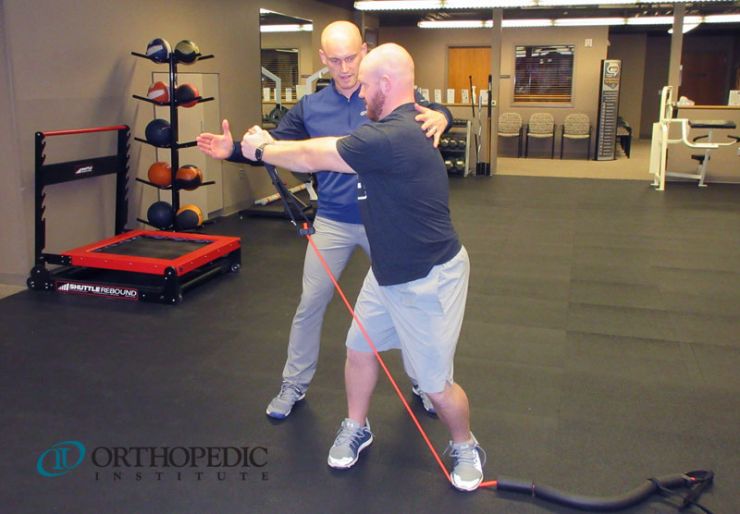All golfers want to get better. Whether you are a beginner trying to break 100, experienced and trying to become a scratch golfer, or a professional trying to make a living; we all want to improve and we all want to hit the ball further. I have never had a client tell me they hit the ball too far. There are many ways to get better. For example taking lessons is a big step to improving your game. Having the correct golf clubs is also important. However, fitness in the golf world has been getting a lot of attention lately. You hear the players and analyst on television talk about how fitness has changed the game of golf. Professional players are much more athletic and hitting the ball further. This thought is beginning to trickle down into the amateur world as well. This makes it very important that amateurs understand how to exercise if they want to get the most benefit.
Having an exercise program will help your game, if done the right way. However, most people only perform exercises they know they do well. It is human nature to do the things we are good at. Working with clients at the Orthopedic Institute Golf Medicine Program, we see this over and over. A golfer will stretch their shoulders prior to a round of golf, however they have excellent shoulder motion. They will stretch their hamstring by reaching to their toes, however they can already put their palms on the ground. They will be doing bench presses expecting 20-yard gains with their driver when they can already lift 250 pounds. In reality, if you want to do something to improve your golf game then you need to challenge yourself and work on the things you do not do well.
You may be very flexible in the shoulders, but your hips are extremely tight so you should be working on hip mobility in your warm-up routine. You might be able to bench press 250 pounds, but your spine is so stiff that you can’t turn in your backswing; you should consider taking a yoga class instead of hitting the bench press for your next work-out.
I do encourage everyone to include a fitness program if they want to become a better golfer, but to actually see the improvements, you need to understand your body and learn what you cannot do well and try to incorporate regimens that will improve these limitations.
Adam Halseth is a Titleist Performance Institute Medical Level 3 certified physical therapist at the Orthopedic Institute in Sioux Falls, SD. He has worked extensively with professional and amateur golfers. He collaborates with some of the top golf medical professionals in the nation including those on the LPGA and PGA tours. He performs comprehensive assessments designed to find physical limitations in strength and mobility and correlates this with a detailed swing analysis to determine the optimal program for the golfer to maximize benefits.
Email Adam at ahalseth@ortho-i.com for more information on the Orthopedic Institute Golf Medicine Program.
Follow him on Twitter and Instagram @adamhalseth.
Orthopedic Institute has physical therapists that specialize in various areas to meet your orthopedic and sports medicine needs. This includes sports medicine conditions, general orthopedic, blood flow restriction, spine conditions and aquatic therapy.


